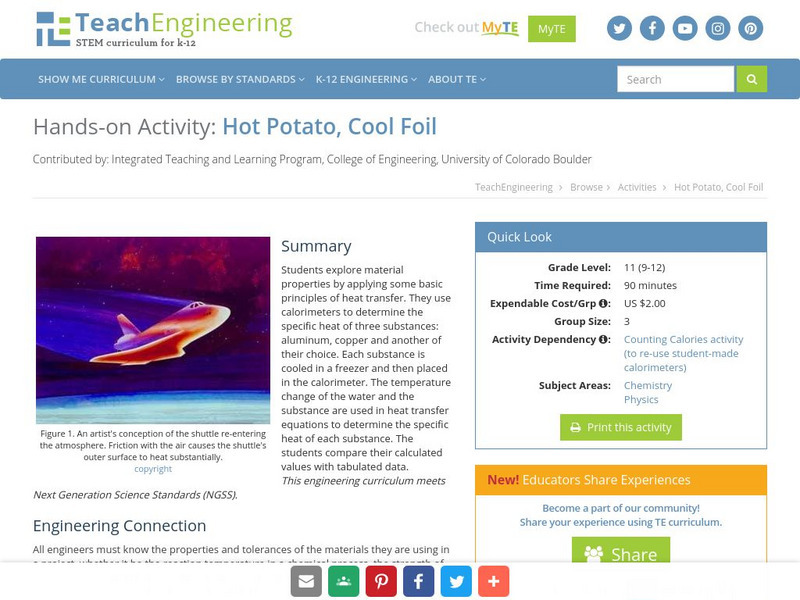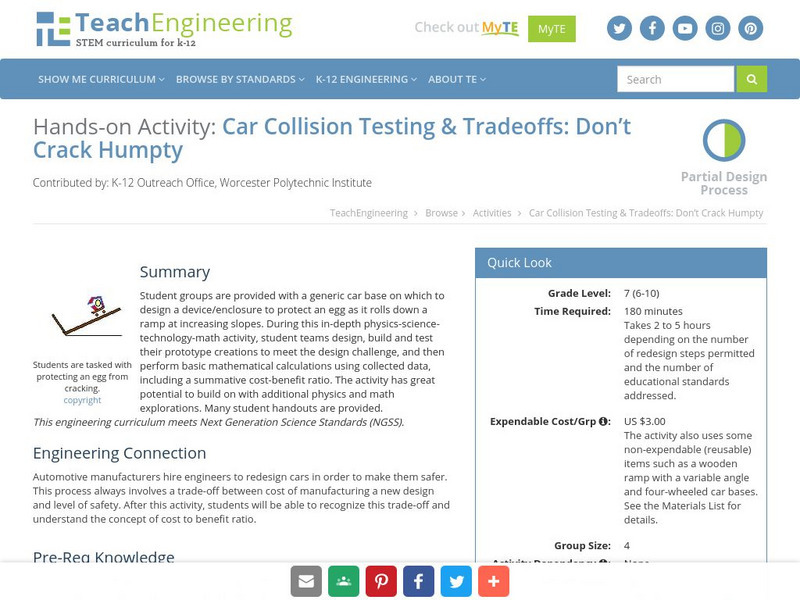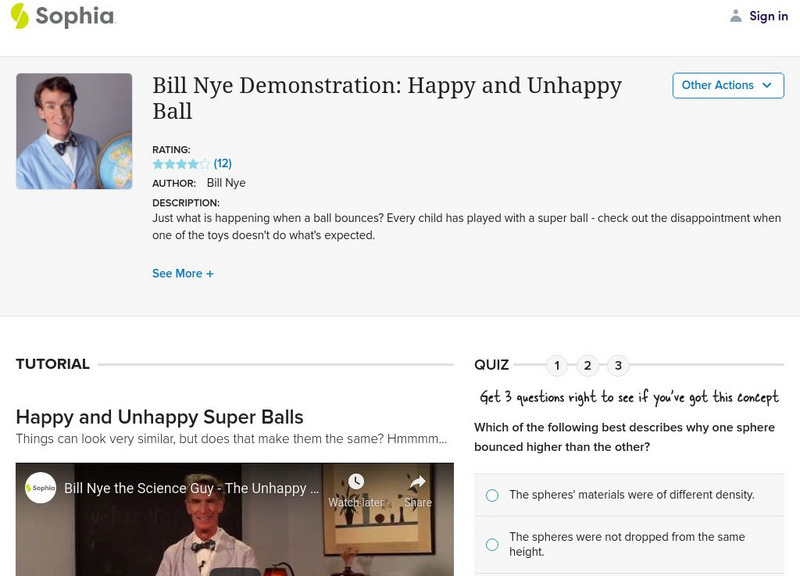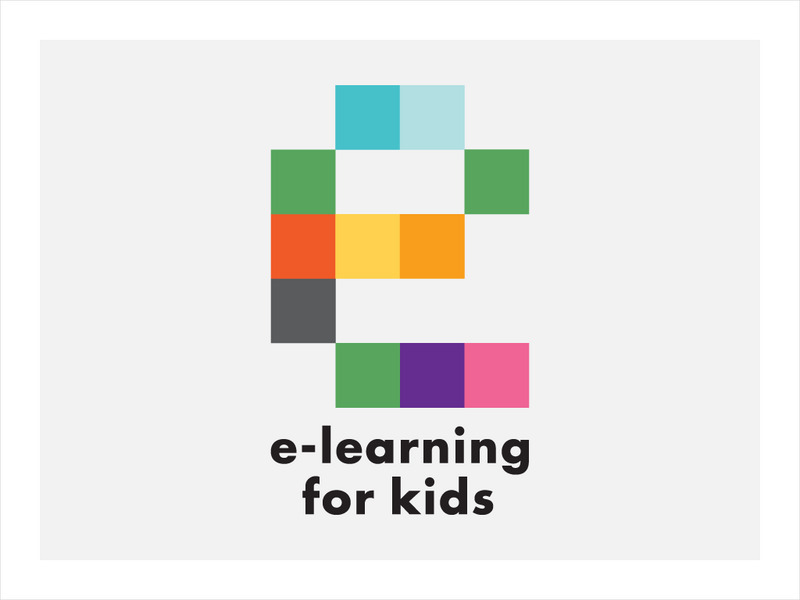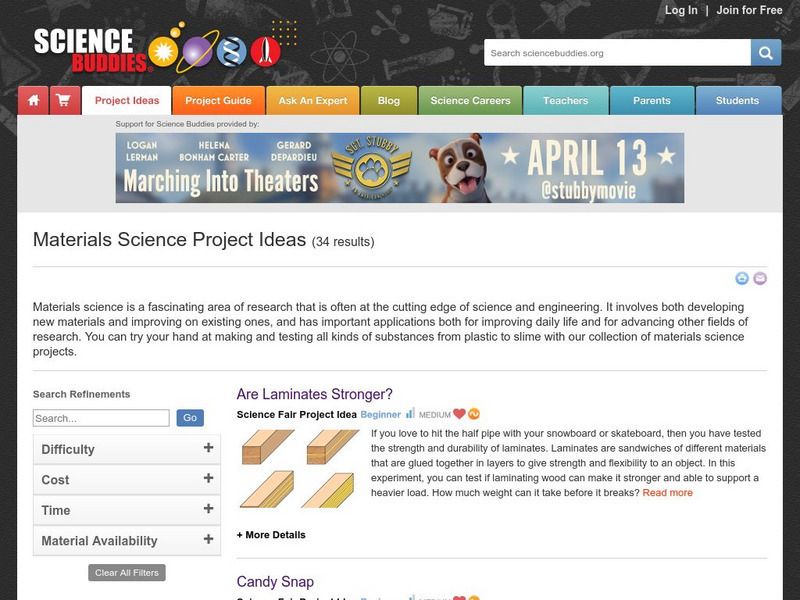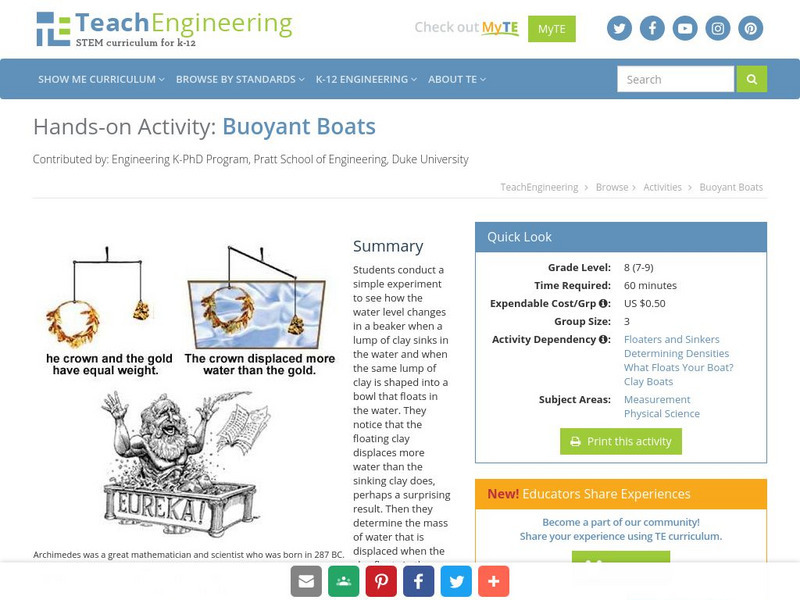PBS
Pbs: Nova: Making Stuff: Stronger
The first in a four-part PBS series, hour-long video defines "strength" of materials, with examples ranging from steel cables to mollusk shells. Insight from research and experts offers a look into the process of "re-engineering"...
Other
Case Western Reserve University: Introduction to Materials Engineering
A curriculum resource from an introduction to materials course taught at Case Western Reserve University. Includes teaching overheads, homework assignments, and exams.
American Geosciences Institute
American Geosciences Institute: Materials and Minerals
Seven hands-on lessons module that allows students to learn about materials and minerals. These inquiry-based explorations investigate properties of materials, where mineral deposits can be found, how deposits are formed, how minerals...
TeachEngineering
Teach Engineering: Breaking the Mold
In this math activity, students conduct a strength test using modeling clay, creating their own stress vs. strain graphs, which they compare to typical steel and concrete graphs. They learn the difference between brittle and ductile...
TeachEngineering
Teach Engineering: Engineering for the 3 Little Pigs
The purpose of this activity is to demonstrate the importance of rocks, soils and minerals in engineering and how using the right material for the right job is important. The students build three different sand castles and test them for...
TeachEngineering
Teach Engineering: Hot Potato, Cool Foil
Students explore material properties by applying some basic principles of heat transfer. They use calorimeters to determine the specific heat of three substances: aluminum, copper and another of their choice. Each substance is cooled in...
TeachEngineering
Teach Engineering: Beating the Motion Sensor
Lighting is responsible for nearly one-third of the electricity use in buildings. One of the best ways to conserve energy is to make sure the lights are turned off when no one is in a room. This process can be automated using motion...
TeachEngineering
Teach Engineering: Creepy Silly Putty
Students learn about viscoelastic material behavior, such as strain rate dependence and creep, by using silly putty, an easy-to-make polymer material. They learn how to make silly putty, observe its behavior with different strain rates,...
TeachEngineering
Teach Engineering: How Cold Can You Go?
Students explore materials engineering by modifying the material properties of water. Specifically, they use salt to lower the freezing point of water and test it by making ice cream. Using either a simple thermometer or a mechatronic...
TeachEngineering
Teach Engineering: Breaking Beams
Students learn about stress and strain by designing and building beams using polymer clay. They compete to find the best beam strength to beam weight ratio, and learn about the trade-offs engineers make when designing a structure.
TeachEngineering
Teach Engineering: Focus on Fabrics: Putting Materials to Good Use
The goal is for students to understand the basics of engineering associated with the use, selection, and properties of fabrics. A wide variety of natural and synthetic fibers are used in our clothing, home furnishings and in our travel...
TeachEngineering
Teach Engineering: Car Collision Testing & Tradeoffs: Don't Crack Humpty
Student groups are provided with a generic car base on which to design a device/enclosure to protect an egg as it rolls down a ramp at increasing slopes. During this activity, student teams design, build and test their prototype...
Sophia Learning
Sophia: Bill Nye Demonstration: Happy and Unhappy Ball
What happens when a ball bounces? Learn about liquid nitrogen as Bill Nye the Science Guy demonstrates what happens to everyday materials when placed in it. [0:22]
Better Lesson
Better Lesson: Ways to Classify Objects
Learners often classify objects by size and shape. Now they will look more at the properties of objects such as hardness, flexibility, and texture. Included in this lesson are examples of student's science journal entries, a video of the...
CPALMS
Cpalms: Observable Properties of Matter
[Free Registration/Login Required] Students will sort objects according to their observable properties, such as size, shape, color, temperature (hot or cold), weight (heavy or light) and texture. Included are printable resources, a...
Other
Covington Independent Public Schools: Grades K 2: It's Best For
Students will be testing different materials to see which is best suited for a particular task or quality: soaking up water, being flexible, and being abrasive. Each test can be done during a single class period.
E-learning for Kids
E Learning for Kids: Science: Scotland: How Can We Group Non Living Things Based on Characteristics/purposes?
Montgomery is a true Scot, and even wears a kilt. He works in his dad's store and needs help learning about materials.
E-learning for Kids
E Learning for Kids: Science: The Netherlands: Where Do Materials Come From?
Jan, the son of a shrimp fisher, is exploring the differences between materials. Join in on the adventure to help him learn.
Quizlet
Quizlet: Properties of Metalloids, Metals, and Nonmetals
Use these flashcards to help study the properties of metalloids, metals, and nonmetals. You can study them online, have them read to you, or print them out. To enhance your learning, there are tests to take and games to play.
TED Talks
Ted: Ted Ed: Why Doesn't Anything Stick to Teflon?
Teflon was in the spacesuits the Apollo crew wore for the moon landing, in pipes and valves used in the Manhattan project, and it may be in your kitchen, as the nonstick coating on frying pans and cookie sheets. So what is this slippery...
Science Buddies
Science Buddies: Materials Science Project Ideas
A list of projects ideas through which students test materials for various qualities, such as strength, flammability, density, and resistance to corrosion.
Other
University of Oxford: Nature's Raincoats
This website shows a current research project where scientists are collaborating together to create a water resistant surface. Scientists are doing this by researching the properties and behaviors of water. Site contains background...
TeachEngineering
Teach Engineering: Bend That Bar
In this activity, the students will learn about material properties. They will learn that engineers must consider several material properties when designing. This activity focuses on strength-to-weight ratios and how sometimes the...
TeachEngineering
Teach Engineering: Buoyant Boats
Students learn about displacement, density and buoyancy then apply their knowledge to build a floating object.







